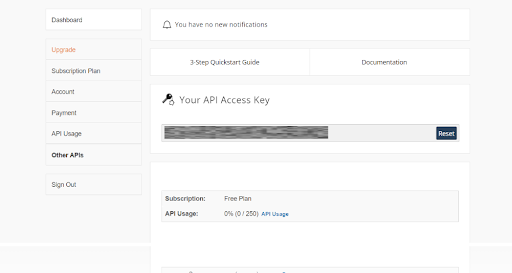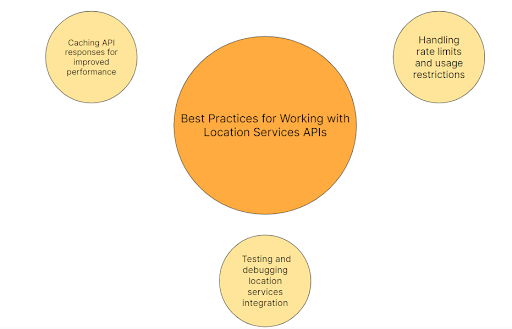
Integrating Location Services API with Your Mobile App_ A Step-by-Step Guide
Most of the mobile applications you see these days need accurate location data. Some developers face difficulty in getting precise location data efficiently. That's where integrating a location API can be the perfect solution. This step-by-step guide will explore integrating a location services API into your mobile app.
What Are Location APIs?
Application programming interfaces for location services give developers access to and control over location-related capabilities in their mobile apps. These APIs act as an interface between location-based services and apps, allowing apps to access and manipulate location data.
There are different kinds of geolocation APIs readily available. One category is GPS-based APIs, which use the device's GPS or wifi access points in order to deliver precise, real-time location data. Geocoding APIs are another type; they translate addresses or place names into geographic coordinates (latitude and longitude) and back again. Applications can convert user input into useful location data using geocoding APIs, enabling functions such as map integration, location-based search, and routing.
How to Choose the Right Location Services API?
There are various key factors to take into account when you are selecting the best location services API for your mobile app.
Reliability and accuracy - Look for an API that provides accurate location data. Take into account the degree of accuracy needed for the features of your app, such as geofencing or real-time tracking.
Documentation and support - Review the documentation and support materials that are offered for the API. You can cut down on time spent on integration and troubleshooting by using an API that has clear usage instructions and examples.
Pricing and usage restrictions - Think about the API's pricing model and determine whether it fits your spending plan and app usage. Take note of any restrictions or usage caps, such as the number of requests permitted daily or any rate restrictions.
Step-by-Step Guide to Integrating Location Services API
In this guide, we will be using IPstack API in order to demonstrate the integration. IPstack is an IP geolocation API service that provides developers with geolocation data based on IP addresses.
Step 1: Obtaining an API key
First, sign up for a free account on IPstack (in case you haven't already). You will be given access to a dashboard.

You will be able to access your free API key.

Step 2: Setting up the development environment
Open the text editor or integrated development environment of your choice. The most preferable choice would be VS Code.
In order to integrate the IPstack API, start a new project or open an existing one.
Step 3: Installing necessary dependencies
Install the necessary HTTP client library or package, depending on your programming language and framework, to send the API requests. (For example, Axios in JavaScript and Requests in Python).
Step 4: Initializing the API and making API calls
Initialize the IPstack API in your code by sending HTTP queries to the API endpoint. Use the IPstack base URL (https://ipstack.com/), then add your API access key to the access_key field. An example API request is provided here.
GET https://api.ipstack.com/134.201.250.155?access_key=YOUR_ACCESS_KEY
Replace "YOUR_ACCESS_KEY" with the API access key you acquired and "134.201.250.155" with the IP address you wish to query.
Step 6: Implementing user interface components
Integrate the data you've collected from the IPstack API response into the user interface elements you're using (for example, show the flag of the country you're in or the position on a map).
Best Practices for Working with Location APIs

It's important that you adhere to best practices when working with location services APIs to maximize efficiency and respect use limitations. The following are some suggested best practices.
Install a caching system to save the user's location data that is frequently accessed. As a result, fewer API requests are made, response times are expedited, and pointless network requests are minimized.
Recognize the usage constraints and rate limits imposed by the fused location provider. Keep track of and control your API consumption in order to prevent going over the allocated amount. This could probably result in a reduced level of service or extra fees.
Test your integration carefully to find any problems and fix them. Simulate several scenarios, such as shifting network conditions, location precision, and error situations. In order to properly identify issues, use debugging tools and log API responses.
Why Should You Use IPstack as Your Geolocation API?
IPstack proves to be a valuable choice for incorporating geolocation functionality into your applications. We provide precise and complete information about users' locations with extensive IP geolocation data and simple-to-use API. You can improve user experiences, personalize content, focus marketing efforts, and strengthen security precautions through the use of IPstack. We also offer flexible solutions with capabilities such as standard lookup, bulk lookup, and requester lookup in order to meet your unique geolocation requirements.
Sign up today and integrate IPstack into your application to unlock the power of precise and reliable geolocation data.
FAQs
What Is a Location API?
A location API is an interface that allows developers to access and utilize location-related functionalities in their applications.
What Can I Do With a Location API?
Your applications can integrate features such as proximity-based services, mapping, geocoding, and geolocation.
What Are Some Popular Location APIs?
There are popular location APIs such as IPstack API, Google Maps API, Mapbox API, and OpenStreetMap API.
Are Location APIs Free to Use?
It depends on the location API you choose. While some APIs are available for free with some usage restrictions, some demand a subscription fee for greater usage or more functionality.